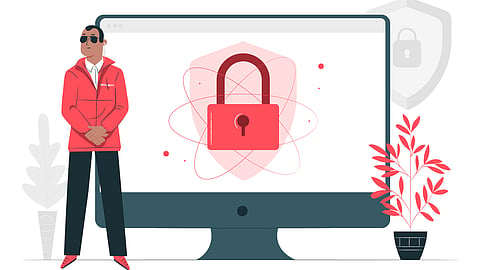Headless CMS security: Top 5 things to consider
Headless CMS platforms allow easy third party integrations and protect against security risks. This is mostly due to their design - you can’t access the publishing platform from the database - it’s secure and user centric. You are less likely to experience offline attacks this way and due to the two factor verification process and personalization the security is a high wall. The CMS can secure any data holding areas as it can be completely isolated from the front layer without causing any alarm, this means you can go as far to restrict IP access to the CMS.
You may have heard the more popular platforms like Wordpress used worldwide by a large number of people, can be easily attacked. If you’re a publisher, you might be looking for Wordpress VIP or dedicated platforms like Bold, it’s important to keep a few things in mind to steer clear of any confusion around security that a headless CMS brings forth.
1. Powerful Architecture
The architecture of a headless CMS is the first and foremost contributor to it’s digital personality. Having a separate front and back end reduces the amount of infrastructure that’s internet-facing and it makes APIs the most important factor. This is the primary reason why headless CMSs are not as prone to cyber threats as traditional CMSs. The architecture allows a single, fixable crisis/threat. In an instance where you are under attack, developers can look into the problem without it affecting your entire platform all at once. The two - front and back end can stand independently while the other recovers, allowing you more room for problem-solving. It reduces the attack surface and therefore, these smaller attacks make it easier to navigate through the digital crisis.
2. Having built-in Security Features
Something you should consider are the built-in features that come with your CMS, this will help you secure your content and website. Most CMS platforms do provide a specialised security team who look into the security of your website regularly and/or are readily available to deal with threats as and when they arise. CMSs provide a powerful firewall fit for your business, SSL, dedicated security teams and personalized CDN. It can be stressful to manage all attacks on your own, and on the internet, with the exposure, threats are to be expected. To ensure that your team has enough time to build a strategy, you need a CMS that provides this sense of security.
3. Being a Single source
A headless CMS or any CMS really should be able to act as the single point of your content, all of it. This includes media assets, templates, user profiles etc. It should be able to carry out multiple functions, support integrations, communication channels and touchpoints. It must let you standarize your brand voice to maintain uniformity. Multi-tenancy is crucial in your cms, it should run multiple sites that can operate independently and/or share content and assets. This is a feature that helps share content assets across multiple areas while allowing easy regulation. Being a single source helps you to stay safe as well. How you may ask? It’s easier to track down the problem this way. Rather than running through a maze, it’s easier to be able to find threats on your CMS where all your content fits and is organized in a searchable way - an unexpected charm of an effective workflow.
4. Preventing DDoS attacks
The way headless CMS renders content and its architecture (as discussed above) helps prevent DDoS attacks. A headless CMS generally does not render the content it delivers and instead leaves that to client side JavaScript, with most of it rendered on the client side and not the server side, a DDoS attack can be managed. Depending on the scale of the client and the server, it is possible to not face any serious impact overall.
Unlike the traditional CMS, the layers of a headless CMS are separated and coupled together by using APIs. It is APIs that make the headless CMS less susceptible to these attacks.
5. There's safety in cloud
Most headless CMSs are cloud native and while many may opt for private cloud or hybrid, the cloud bit remains. This helps take advantage of scale and speed of the cloud on your tech terms that helps you not only make use of the cloud but also allows you to navigate that through the choice of your tool ergo the infrastructure. Having the cloud to depend on, usually the AWS, it’s easier to secure valuable native content and the archives without having to panic over storage threats or system failures even - the cloud allows this security for the price.
Conclusion
Technology is constantly evolving and with it you get to use benefits to your interest. The additional benefits like security help you stay protected so that you can focus on ensuring that your new content has a safe platform to grow and gain recognition. Bold, from Quintype is a headless CMS that takes pride in security features. As explained above, the CMS ensures that your content is continuously protected and free from attacks. The technical team also has someone monitoring your website to ensure that any concerning internet threats are taken care of under 24 hours. Are you ready to evolve your current platform?
You can look into some of the case studies with our publishers to get a better picture of the same.

